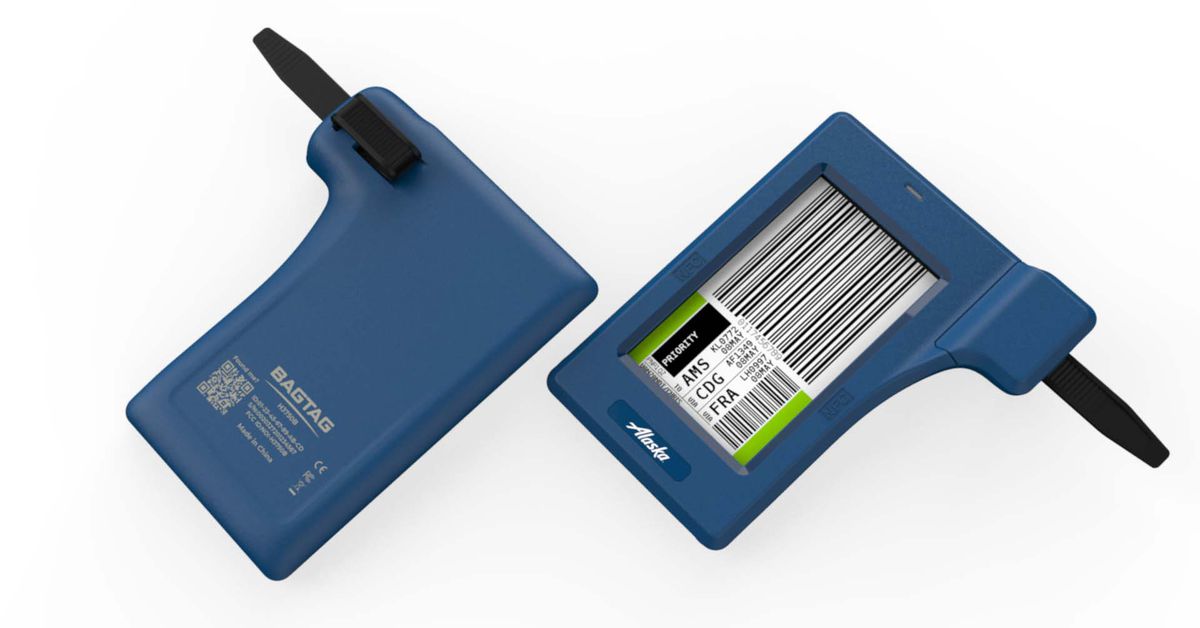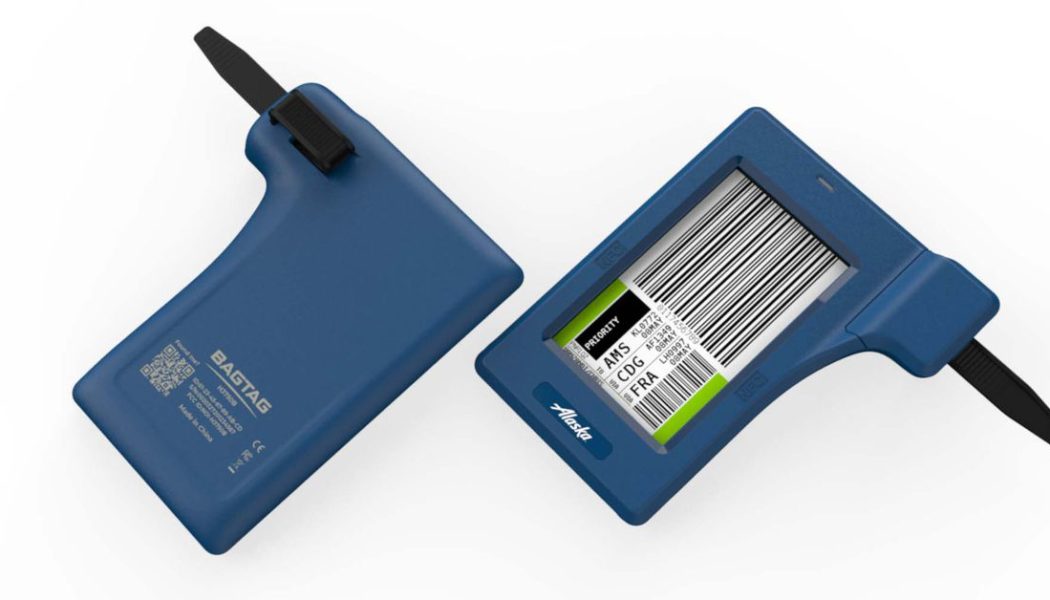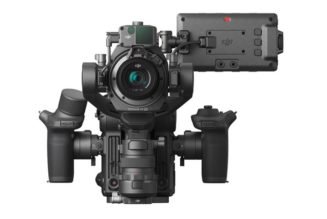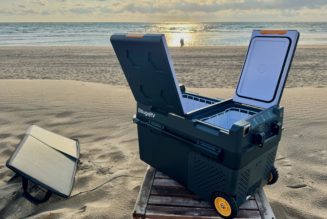
Alaska Airlines says it’s becoming the first US-based airline to roll out support for electronic bag tags, small programmable devices with e-paper displays that are designed to replace the paper tags currently in use. It plans to launch the new program in phases, and it’ll initially be focused on San Jose airport in California. The airline will initially give out 2,500 of the tags for free to its frequent flyers from the airport in late 2022, TechCrunch reports, and they’ll be available to purchase by Mileage Plan members next year.
Alaska Airlines intends for the tags to cut down on the amount of time its customers spend on flight admin at the airport. Rather than having to print a luggage tag in person, they can instead set up the electronic bag tag at home while checking in on the mobile app. Then, when customers arrive at San Jose airport, they can use a self-service bag drop without having to print out a fresh tag. In total, Alaska Airlines hopes that customers could cut the amount of time spent checking luggage at the airport by up to 40 percent.
BagTag is the manufacturer behind the electronic tags, which are already used by other airlines outside of the US including Air Dolomiti, Austrian, China Southern, Lufthansa, and Swiss. The Flex model that Alaska Airlines appears to be using is programmed over NFC by holding either an iPhone or Android handset next to the tag to transmit the required information. BagTag advertises that the tag is “battery-less” and never needs to be recharged, that’s in contrast to a previous version of the technology Alaska Airlines started testing in 2015.
“This technology allows our guests to tag their own bags in just seconds and makes the entire check-in process almost all off-airport,” said Charu Jain, senior vice president of merchandising and innovation at Alaska. ”Not only will our electronic bag tags allow our guests to quickly drop-off their luggage after they arrive at the airport, the devices will also give our employees the opportunity to spend more one-on-one time with guests who ask for assistance and reduce lines at our lobbies.”
Arguably, the tags also save on the paper that needs to be used to make traditional tags, though I’d imagine you’d have to use one electronic tag hundreds of times to make it more resource efficient. At least they’re designed to be rugged, with an IP65 rating for dust and water resistance, and a testing process that TechCrunch reports involved running luggage carts, catering trucks, and jet bridge wheels over them to see if they’d break (they didn’t).









